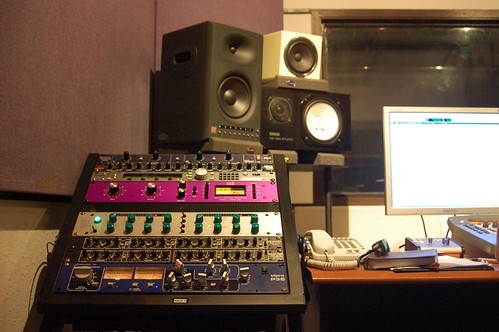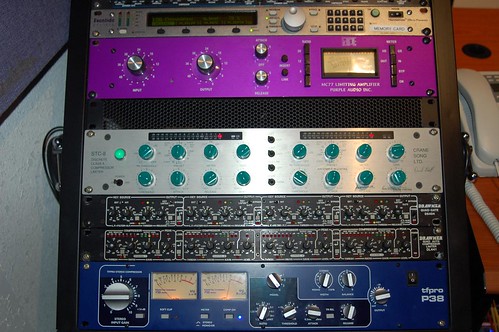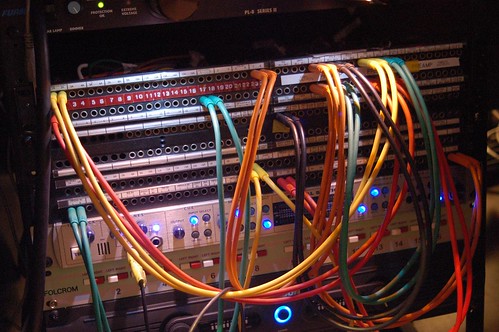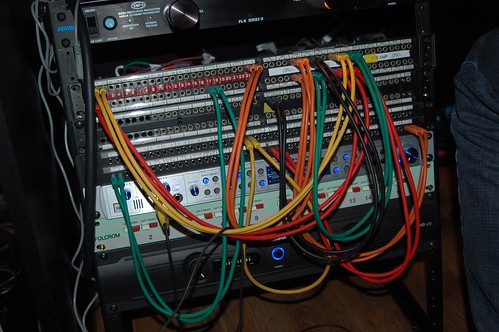Analog & Digital Mixing. ITB and OTB Hybrid.
Here are photos of the pro audio equipment used during the mixing sessions of HIJA and Dr. Crowley records. For both projects, we really strived to go analog as much as possible, utilizing Pro Tools as tape recorder and editor, as well as for automation. We relied on the artists/musicians and their gear for most of the tone shaping, avoiding unnecessary processing so we can preserve the “feel” and “feeling” of the performances. HIJA is a funk-ish soul band while Dr. Crowley is a blues-based rock n roll band.

Hybrid mixing tools. Analog and digital
I group the tracks/instruments, take them out of Pro Tools via Aurora Lynx digital to analog converters. Most tracks go straight to the Folcrom summing device, some instruments such as drums go through outboard compressors (tfpro p38 or JoeMeek sc2.2), bass through the Distressor and Lil FreQ, vocals through LA-2A, guitars through SC2 limiter, some guitars through Purple Audio MC77 compressor. I also used the Eventide Eclipse for most of the vocal reverbs, accomplished as an insert on the Voc Reverb Aux buss (of course with the hardware inserts I had to compensate for hardware insert delay).

Outboard Signal Processing. Compressors. Limiters. ReVerbs.
All tracks/instruments are routed back to the Folcrom, then the Folcrom outputs are sent to the Great River MP2NV prea-amp (a Neve style pre-amp), then to the Great River EQ2NV parametric equalizer, then to the Crane Song STC8 compressor, then to the Pendulum Audio PL-2 analog limiter.

Great River Mp2NV and EQ2NV. Neve style preamp and equalizer.
The final mixdown is captured to an Alesis Masterlink at 96Khz sample rate and 24bit word length. This 96 24 high resolution audio file will be used for pre-mastering, creating the “master” CD (PMCD) that will be used to replicate the CDs.
So how do we accomplish all of that routing? Simple (but not so simple)! Our patchbays which we have spent a lot of time studying how to wire wso we can go crazy with analog signal processing like we did on these two recent records.
Why go analog and not just mix IN THE BOX? Simple, it’s different. The sound opens up, wider, cleaner, clearer! IN THE BOX sound easily clogs up, but the OUT OF THE BOX sound can take a lot more heavy handling. The difficult part with going OUT OF THE BOX and into the ANALOG domain is that equipment settings are not saved with the session (unlike with digital ITB mixes where plugin settings are saved with the session file). If there will be any recall or adjustments on the mix, it will be back to zero. So for these mixing sessions, we had to print recall sheets for each outboard equipment used and document unique settings for EACH SONG! Yeah, a pain in the arse but that’s ok – anything for the song and the SOUND!
Enjoy!





1 Comment
Jump to comment form | comments rss [?] | trackback uri [?]